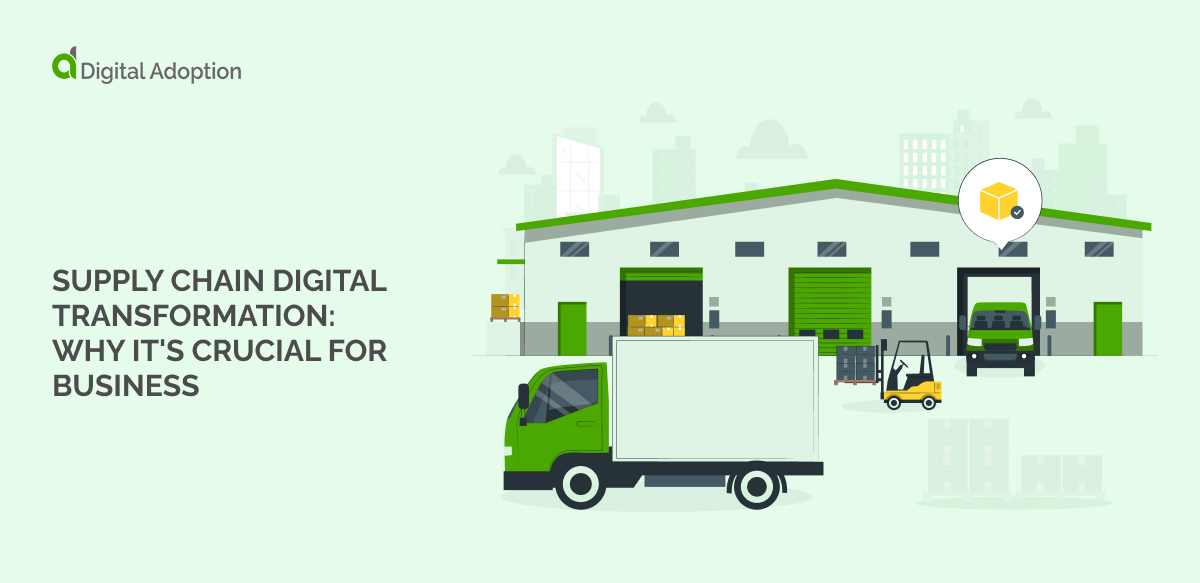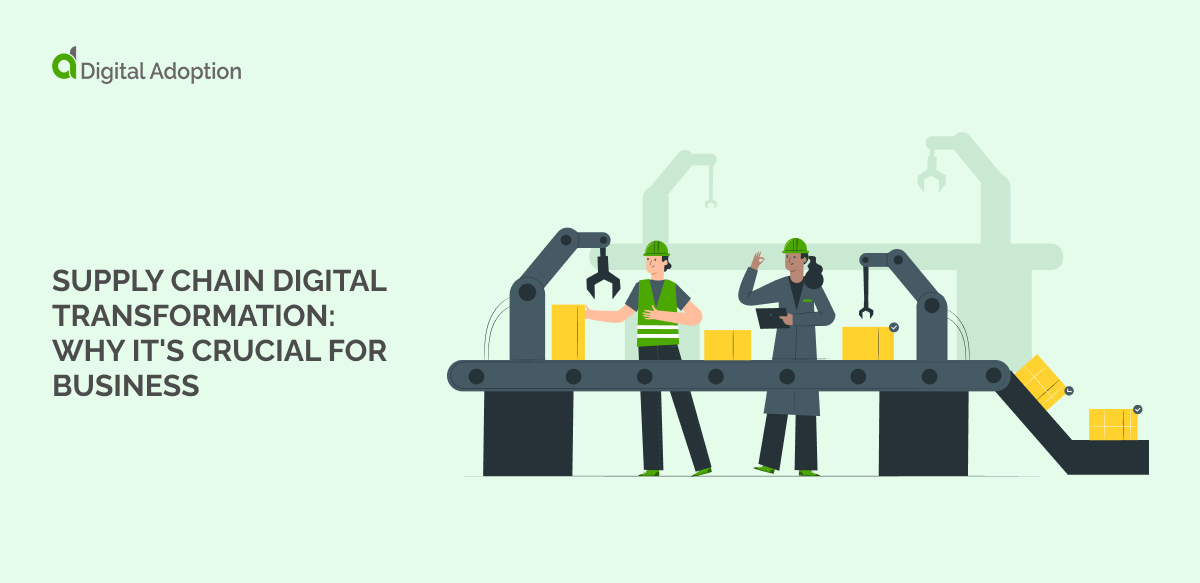Data transformation is the process of converting data from one format or structure into another. It’s a vital component of data management, particularly in today’s digital era, where data is a precious asset.
In our increasingly digitized world, the sheer volume of data businesses must manage is monumental.
This data comes in many forms and formats, from structured data in databases to unstructured data like emails, social media posts, and more.
For this data to be useful to your business, it needs to be in a format your systems can understand and analyze. That’s where data transformation comes into play.
It helps convert raw, often unstructured, data into a more suitable, structured format that your business can effectively use for analysis, insights, and decision support.
In this article, we’re breaking down everything you need about data transformation.
We’ll dive deep into what it means, how it’s done, why it’s critical for your business, and what tools and strategies you can use to perform it effectively. We’ll also look at your challenges and how to overcome them.
We aim to arm you with the knowledge and tools you need to harness the power of your business data to its fullest potential.
The importance of data transformation in business
Data transformation has a profound effect on business decision-making.
Converting raw, often unstructured, data into a structured and usable format provides the foundation for robust data analysis and business intelligence.
You can discover patterns, trends, and insights that drive strategic business decisions with transformed data.
It can enable your business to transition from reactive decision-making, based on gut instinct or disjointed information, to proactive and data-driven decision-making. According to Mckinsey, companies that adopt data-driven business models can achieve 7-15% earnings increases.
Data transformation is also crucial in marketing and customer relationship management (CRM).
In marketing, it enables you to integrate data from various channels – like your website, social media, email marketing, and more – into a single view.
This provides a more comprehensive understanding of your marketing performance, helps identify successful strategies, and allows you to fine-tune your efforts based on hard data.
For customer relationship management, data transformation is essential in building a 360-degree view of your customers.
By transforming and integrating data from various touchpoints, you can understand your customers’ behaviors, preferences, and needs more nuancedly.
This deeper understanding enables personalized interactions, better customer experience, and stronger customer relationships.
Finally, you can’t underestimate the impact data transformation could have on employee productivity.
Mckinsey recently conducted a survey investigating how much time employees lose due to poor data quality and availability.
They found that, on average, 29% of employee time is lost this way, compared to only 5-10% in leading organizations.
To sum it up, data transformation is important because it:
- Enables data-driven decision-making
- It helps you develop a better understanding of your customers
- Drives employee productivity
Understanding data transformation
Data transformation, at its core, is the process of converting data from one format, structure, or schema to another.
It’s a vital part of several other processes, including data integration, data warehousing, and data management, to name a few.
It might be easier to wrap your head around data transformations by considering the following:
Most data transformations can be assigned to one of the following three types.
Simple transformations involve basic changes to the data without altering its meaning or integrity, such as consistently changing text to uppercase or formatting dates.
Cleaning transformations ensure the data’s quality by removing errors, duplicates, or inconsistencies.
Complex transformations require advanced algorithms or business rules to transform the data, often creating new data and, for example, creating a customer segment based on their purchase history.
The role and purpose of data transformation
Data transformation serves a vital role in the broader scope of data management.
It helps ensure that the data you collect from different sources is compatible with each other and your systems.
Without data transformation, you’d be trying to make sense of disparate sets of data, which can lead to inaccurate analyses and faulty business decisions.
Moreover, data transformation makes integrating data from various sources possible into a single, cohesive view.
This unified perspective enables you to make more informed decisions, discover new insights, and drive your business forward.
Five key components of data transformation
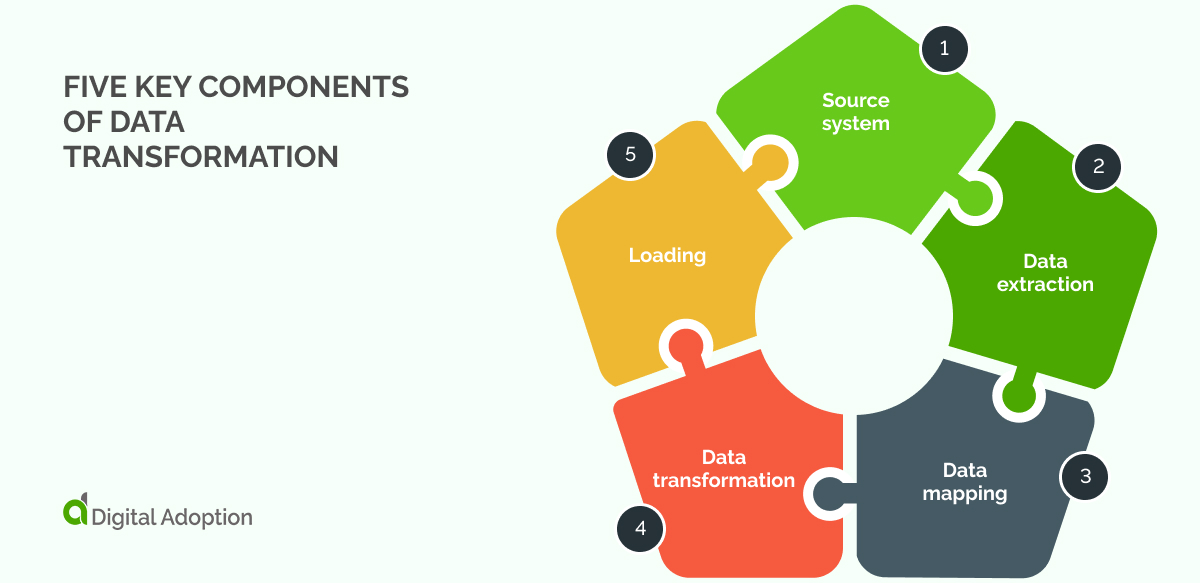
While the specifics may vary based on your unique business needs and the tools you use, there are some key components you’ll often see in a data transformation process:
1. Source system
This is where the data you want to transform originates. It could be a CRM system, a marketing hyperautomation platform, or another data source.
2. Data extraction
This involves pulling the data from the source system to be transformed.
3. Data mapping
This step defines how the data will be changed, usually by creating rules or instructions.
4. Data transformation
This is where the actual transformation occurs, based on the rules defined in the data mapping step.
5. Loading
Finally, the transformed data is loaded into the target system, ready for analysis and use.
Data transformation: Techniques and tools
Data transformation is not a new process- it’s something businesses have done for decades.
Traditionally, data transformation was carried out manually or with simple scripting languages.
These methods often involved writing lengthy code and SQL queries to extract data from source systems, transform it into the required format, and then load it into a data warehouse or database.
While effective, this method was time-consuming, error-prone, and not scalable for larger, more complex datasets.
Another traditional method involved middleware or integration tools that connected different systems and facilitated data transformation.
These tools provided a more automated and less code-intensive process than manual scripting, but they often required a high degree of technical expertise. They could be difficult to adapt to changing business needs or new data sources.
Many modern, more sophisticated tools have emerged to facilitate data transformation in recent years.
These tools offer features like graphical interfaces for designing data transformation workflows, built-in functions for common transformation tasks, and support for various data sources and formats.
These tools make data transformation more efficient and less prone to errors. They also allow non-technical users to perform data transformation tasks, democratizing data access within your organization and enabling a wider range of staff to derive insights from the data.
Four common challenges (and the solutions) in data transformation
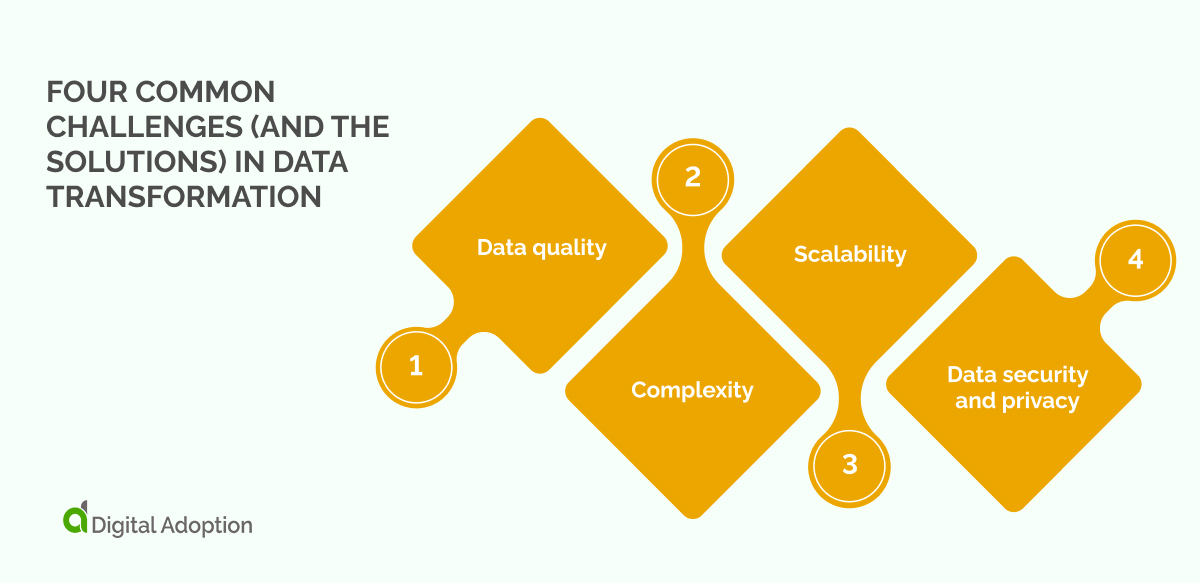
Whatever type of data transformation you undergo and whatever tools or techniques you employ, there are a few challenges you’re likely to encounter along the way.
Here are the four challenges we think are most prevalent:
Challenge #1: Data quality
Poor-quality data is a common problem.
This includes incomplete data, inaccurate data, outdated data, or data that are inconsistent across different sources.
Poor quality data can lead to inaccurate transformations and unreliable insights.
Solution: Data quality management
Implementing an effective data quality management (DQM) strategy means establishing protocols for auditing, cleaning, and integration.
In the auditing phase, data is checked for errors and inconsistencies.
Data cleaning, also known as data cleansing, involves removing or correcting erroneous, incomplete, improperly formatted, or duplicated data.
Integration, the final phase, merges data from different sources to provide a unified view.
By incorporating DQM practices, you ensure your data’s validity, accuracy, and reliability, thereby making your data transformation efforts more effective.
Challenge #2: Complexity
As the amount of data and the complexity of your business rules increase, the transformation process can become increasingly complex and harder to manage.
Solution: Simplified transformation logic
You could create a catalog of reusable transformation rules and functions to simplify transformation logic.
Having a repository of commonly used transformations can reduce the time taken and ensure consistency across transformations.
Also, consider using modern data transformation tools that provide visual, drag-and-drop interfaces to design transformation workflows.
This can make complex transformations more manageable, reduce the need for manual coding, and minimize the chance of errors.
Challenge #3: Scalability
As your business grows, so does the volume of your data.
It can be challenging to scale your data transformation processes to handle this increased volume without sacrificing performance.
Solution: Scalable tools and techniques
As your organization grows, your data transformation processes should be able to grow with it.
Cloud-based data transformation solutions offer scalability and flexibility, adjusting to your changing needs.
These solutions can handle sudden surges in data volumes without a loss in performance. They also eliminate the need for substantial upfront investments in infrastructure, allowing you to pay as you grow.
Challenge #4: Data security and privacy
Data transformation involves moving and changing data, which can raise data security and privacy issues.
It’s crucial to ensure your data transformation processes are secure and comply with all relevant laws and regulations.
Solution: Strong security measures
Ensuring robust data security involves several layers.
At the basic level, your data should be encrypted at rest and in transit.
Access to data should be controlled and monitored, with stringent authentication protocols in place. Regular security audits and penetration testing can help identify and rectify potential vulnerabilities.
Moreover, to maintain compliance with data privacy regulations, consider implementing a data anonymization process during transformation, especially when dealing with sensitive data.
Future trends in data transformation
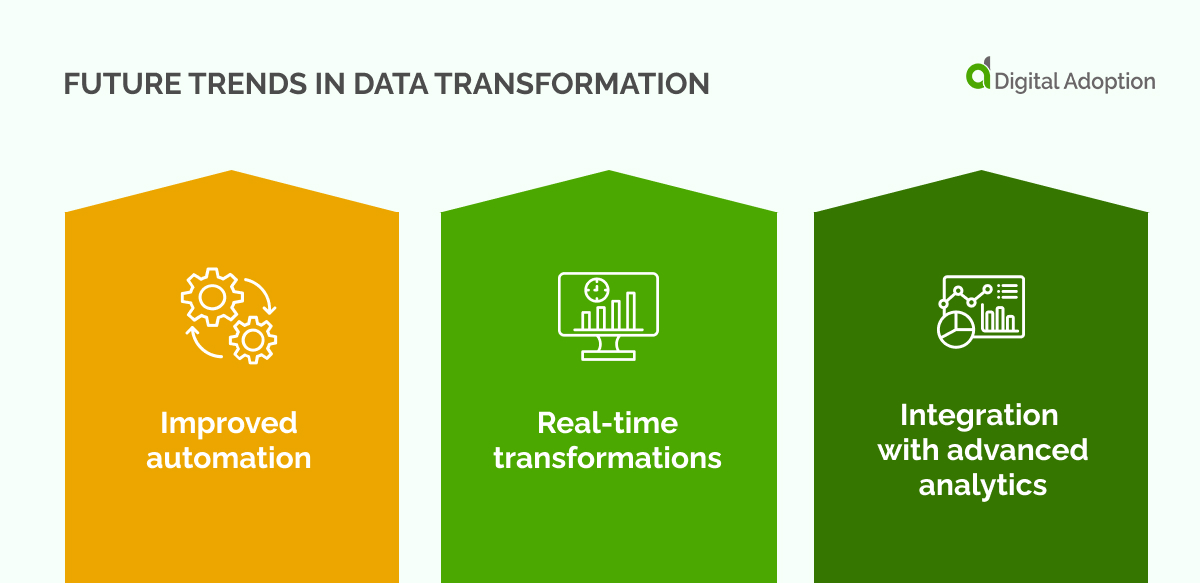
There are several exciting advancements on the horizon for data transformation.
Here’s a handful that we’re particularly excited about:
Improved automation
Artificial intelligence (AI) and machine learning algorithms make data transformation more automated, efficient, and intelligent.
As these technologies evolve, we’ll see even more advanced automation capabilities, like automated data cleaning, automated transformation rule generation, and even automated data mapping, where AI can predict how different data fields should map to each other based on historical transformations.
Real-time transformations
The growing need for real-time insights is driving advancements in real-time data transformations.
Technologies like stream processing and real-time ETL (Extract, Transform, Load) are emerging, allowing businesses to transform and analyze data in real-time.
These advancements enable faster decision-making and can give you a competitive edge in rapidly changing markets.
Integration with advanced analytics
We’re moving toward a future where data transformation and advanced analytics tools are tightly integrated.
This means that transformations won’t just be about converting data from one format to another; they’ll also involve preparing data for complex statistical and machine-learning models.
This could include balancing imbalanced datasets, creating derived variables based on complex business rules, or transforming variables to meet the assumptions of particular analytics models.
Moreover, as data transformation tools become more integrated with advanced analytics tools, they’ll become more accessible to non-technical users.
This democratization of data means that more people in your organization can perform complex transformations and derive insights from data.
Data transformation: Turning nonsense numbers into keen insight
The power of data transformation lies in its ability to turn raw data into actionable insights.
Businesses that master data transformation can gain a significant competitive advantage. They can better understand their customers, optimize their operations, innovate their products and services, and ultimately drive growth and profitability.
However, mastering data transformation isn’t just about using the right tools and techniques.
It also involves building a strong data culture, investing in data governance, and continuously adapting to changing trends and technologies.
It’s about recognizing that data is a valuable asset and that transforming this data is a vital process that fuels your business’s growth and success.
Data transformation is more than just a technical process; it’s a strategic capability that can drive your business forward in today’s data-driven world.
Embrace it, invest in it, and watch it transform your business.











